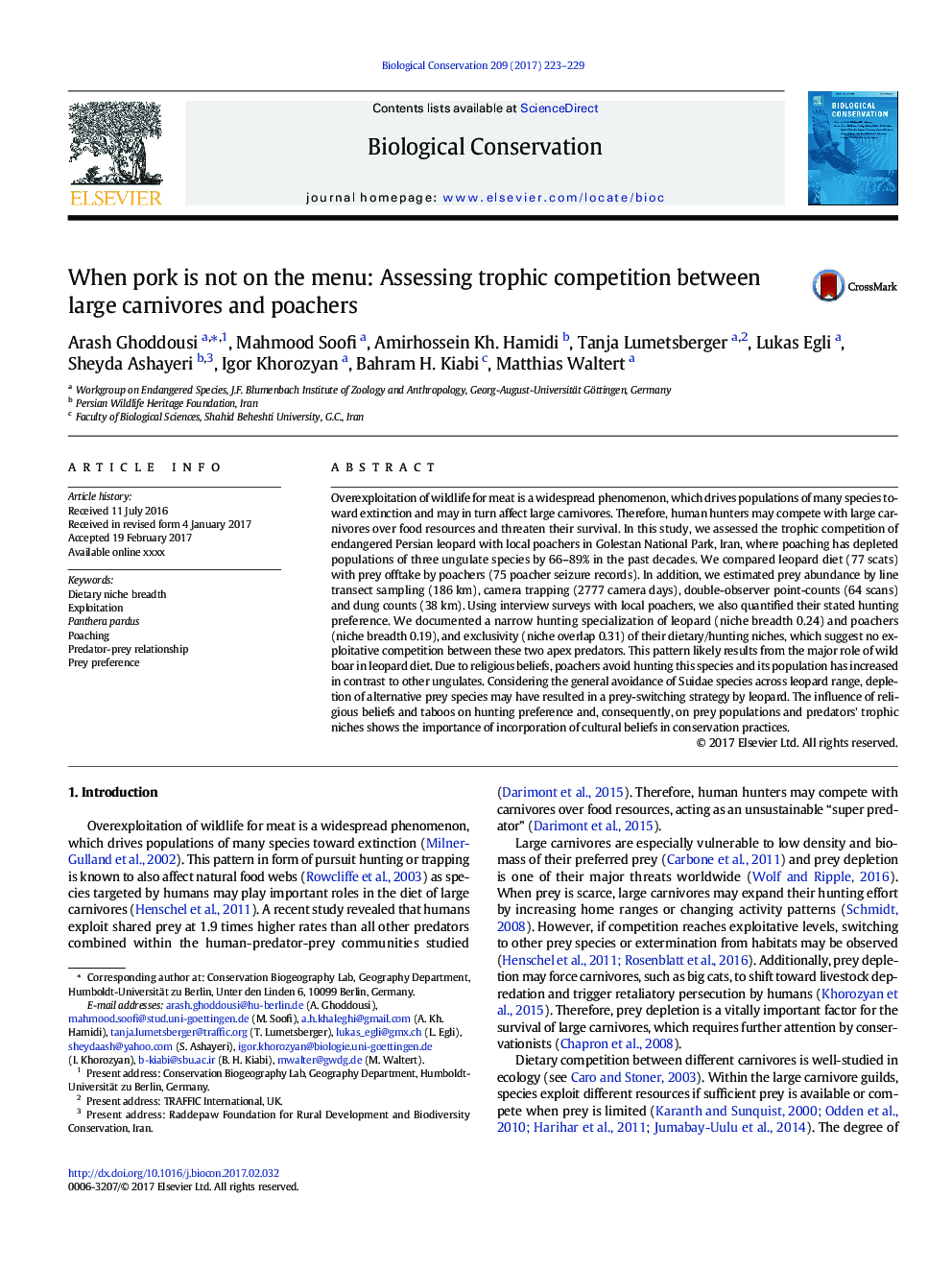| Article ID | Journal | Published Year | Pages | File Type |
|---|---|---|---|---|
| 5743326 | Biological Conservation | 2017 | 7 Pages |
Abstract
Overexploitation of wildlife for meat is a widespread phenomenon, which drives populations of many species toward extinction and may in turn affect large carnivores. Therefore, human hunters may compete with large carnivores over food resources and threaten their survival. In this study, we assessed the trophic competition of endangered Persian leopard with local poachers in Golestan National Park, Iran, where poaching has depleted populations of three ungulate species by 66-89% in the past decades. We compared leopard diet (77 scats) with prey offtake by poachers (75 poacher seizure records). In addition, we estimated prey abundance by line transect sampling (186Â km), camera trapping (2777 camera days), double-observer point-counts (64 scans) and dung counts (38Â km). Using interview surveys with local poachers, we also quantified their stated hunting preference. We documented a narrow hunting specialization of leopard (niche breadth 0.24) and poachers (niche breadth 0.19), and exclusivity (niche overlap 0.31) of their dietary/hunting niches, which suggest no exploitative competition between these two apex predators. This pattern likely results from the major role of wild boar in leopard diet. Due to religious beliefs, poachers avoid hunting this species and its population has increased in contrast to other ungulates. Considering the general avoidance of Suidae species across leopard range, depletion of alternative prey species may have resulted in a prey-switching strategy by leopard. The influence of religious beliefs and taboos on hunting preference and, consequently, on prey populations and predators' trophic niches shows the importance of incorporation of cultural beliefs in conservation practices.
Related Topics
Life Sciences
Agricultural and Biological Sciences
Ecology, Evolution, Behavior and Systematics
Authors
Arash Ghoddousi, Mahmood Soofi, Amirhossein Kh. Hamidi, Tanja Lumetsberger, Lukas Egli, Sheyda Ashayeri, Igor Khorozyan, Bahram H. Kiabi, Matthias Waltert,
